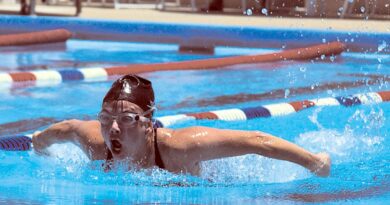Spartans on Form
The Military Discipline and Physical Regimen That Built Ancient Legends
The phrase Spartans on form conjures images of history’s most disciplined warriors operating at peak physical and mental condition. Beyond the Hollywood depictions, the real Spartan military machine represented perhaps human history’s most systematic approach to creating perfectly conditioned warriors. Understanding how Spartans achieved and maintained their legendary form reveals timeless principles about discipline, training, and human potential that remain relevant even today.
The Spartan Philosophy: Form as a Way of Life
More Than Military Training
For Spartans, being on form wasn’t just about battle readiness—it was a complete philosophical approach to existence. The Spartan concept of form encompassed:
-
Physical perfection through systematic training
-
Mental toughness developed through hardship
-
Emotional control maintained in all circumstances
-
Social discipline that prioritized the collective over the individual
This holistic approach meant that a Spartan’s form was evident not just in battle, but in how they spoke, walked, and conducted daily life. Every aspect of existence contributed to their legendary condition.
The Agoge: Forging Spartan Form from Childhood
The Seven-Year-Old’s Transformation
Spartan males began their journey toward perfect form at age seven when they entered the agoge—the state-sponsored education and training program. This rigorous system was designed to produce warriors whose form would be unmatched in the ancient world.
Early Training Components:
-
Physical conditioning through running, jumping, and wrestling
-
Weapons training with wooden replicas gradually progressing to real arms
-
Survival skills including hunting, foraging, and enduring harsh conditions
-
Military drills that instilled instinctive formation fighting
Progressive Training Methodology
The agoge systematically developed Spartan form through carefully structured phases:
Years 7-12: Foundation Building
Boys developed fundamental strength, coordination, and discipline through basic exercises and games that doubled as military preparation.
Years 13-18: Technical Mastery
Intensive weapons training, formation drilling, and tactical education transformed strong boys into technically proficient warriors.
Years 19-20: Applied Conditioning
The krypteia—a period of surviving alone in the wilderness with only a dagger—tested whether young men could maintain their form under extreme deprivation.
The Physical Components of Spartan Form
Strength Training Methods
Without modern equipment, Spartans developed remarkable strength through:
Bodyweight Mastery:
-
Wrestling and grappling as primary strength builders
-
Gymnastics for overall body control and functional strength
-
Calisthenics using natural environments for resistance
Weapons Training as Strength Development:
The repeated use of heavy bronze and iron weapons—spears, swords, and shields—built combat-specific strength while honing technique.
Endurance Conditioning
Spartan form required incredible stamina for prolonged battles and marches:
Running Regimens:
-
Daily running in full armor gradually increasing distance
-
Sprint training for battlefield bursts of speed
-
Long-distance marches carrying heavy equipment
Environmental Adaptation:
Training in heat, cold, and rough terrain prepared Spartans to maintain their form regardless of conditions.
Flexibility and Mobility
Despite their reputation for brute strength, Spartan form included significant flexibility work:
Combat Gymnastics:
Tumbling, rolling, and falling techniques that improved battlefield mobility and reduced injury risk.
Wrestling and Ground Work:
The pancration—an ancient martial art combining wrestling and boxing—required and developed exceptional flexibility.
The Spartan Diet: Nutritional Foundation of Peak Form
Purposeful Austerity
The famous “black broth” and sparse Spartan diet wasn’t just about toughness—it was carefully designed to support warrior form:
Macronutrient Balance:
-
Lean proteins from game meat for muscle repair and development
-
Complex carbohydrates from barley and legumes for sustained energy
-
Healthy fats from olives and nuts for joint health and energy storage
Caloric Management:
Spartans typically operated in a slight caloric deficit, keeping them lean and mean while preventing the sluggishness that comes from overeating.
Strategic Feasting
Contrary to popular belief, Spartans did feast strategically:
Pre-Battle Meals:
Larger carbohydrate-rich meals before anticipated combat to maximize energy stores.
Post-Training Nutrition:
Protein consumption following intense training sessions to aid recovery.
Festival Eating:
Controlled feasting during religious festivals provided psychological relief and occasional caloric surplus.
Mental and Emotional Components of Spartan Form
Psychological Conditioning
A Spartan’s mental form was as carefully developed as their physical condition:
Fear Management:
Systematic exposure to stressful situations built incredible resilience and battle calmness.
Pain Tolerance:
Regular endurance challenges and physical hardship increased pain threshold.
Focus Development:
Weapons training and formation drilling required and built intense concentration abilities.
The Spartan Mindset
The famous Laconic speech pattern reflected deeper psychological form:
Economy of Expression:
Spartans spoke briefly and directly, conserving mental energy for more important matters.
Emotional Control:
Public displays of emotion were discouraged, maintaining unit cohesion and individual composure.
Situational Awareness:
Constant assessment of surroundings and potential threats became second nature.
Daily Training Regimen of a Spartan Warrior
Morning Discipline
A Spartan’s day began before sunrise with activities designed to maintain peak form:
Pre-Dawn Training:
-
Cold water immersion to shock the system awake
-
Stretching and mobility work
-
Weapon inspection and maintenance
First Training Session:
Weapons drills and formation practice while mentally fresh.
Afternoon Conditioning
The hottest part of the day was often used for the most demanding physical training:
Strength and Endurance Work:
-
Wrestling and combat sports
-
Running in full armor
-
Obstacle course navigation
Evening Skills Development
As daylight faded, training shifted to less physically demanding but equally important areas:
Tactical Discussion:
Analysis of historical battles and hypothetical scenarios.
Weapon Crafting:
Maintaining and sometimes creating their own equipment.
Leadership Training:
For those being groomed for command positions.
The Role of Competition in Maintaining Form
Regular Testing
Spartans constantly tested their form through organized and informal competitions:
The Gymnopaedia:
The famous “naked games” where Spartans competed in various athletic events to demonstrate their physical condition.
Unit vs. Unit Competitions:
Military drills turned into contests between different age groups and units.
Individual Challenges:
Wrestling matches, races, and weapons proficiency competitions.
Public Accountability
An essential aspect of Spartan form was its public nature:
Training in Plain Sight:
Unlike modern gym culture, Spartan training happened in open areas where everyone could see everyone else’s condition.
Community Expectations:
The entire society valued and recognized peak physical and mental form, creating powerful social reinforcement.
Spartan Form in Battle: The Ultimate Test
The Phalanx Formation
The famous Spartan phalanx represented the ultimate expression of collective form:
Individual Excellence Serving Collective Perfection:
Each warrior’s personal conditioning contributed to the formation’s overwhelming power.
Synchronized Movement:
Years of drilling created instinctive coordination that made the phalanx nearly unstoppable.
Endurance in Combat
Spartan form enabled seemingly superhuman battlefield endurance:
Thermopylae Example:
The ability to fight for days with minimal rest, food, or water demonstrated their incredible conditioning.
Psychological Resilience:
Maintaining formation and discipline while surrounded and outnumbered required extraordinary mental form.
Modern Applications of Spartan Training Principles
Beyond the Battlefield
While we don’t need to fight Persian armies, Spartan principles for achieving peak form remain remarkably relevant:
Progressive Overload:
The systematic increase in training difficulty mirrors modern athletic development.
Holistic Development:
Spartans understood that physical, mental, and emotional conditioning must develop together.
Consistency Over Intensity:
The daily training regimen emphasized regular practice over occasional extreme effort.
Adapting Spartan Methods Today
Modern enthusiasts can apply Spartan principles to their own fitness journeys:
Functional Strength Focus:
Prioritize exercises that build real-world capability over aesthetic-only training.
Mental Toughness Development:
Incorporate challenging conditions and occasional discomfort into training.
Community Accountability:
Train with others who share similar goals and standards.
The Legacy of Spartan Form
Historical Impact
The Spartan approach to warrior form influenced military training for millennia:
Roman Adaptation:
The Roman legion incorporated many Spartan training principles.
Modern Special Forces:
Elite military units worldwide echo Spartan selection and conditioning methods.
Cultural Legacy
Beyond the military, Spartan form has become a metaphor for:
Personal Discipline:
The commitment to maintaining peak condition in all aspects of life.
Resilience:
The ability to perform under pressure and overcome adversity.
Excellence as Habit:
Making peak performance a daily practice rather than an occasional achievement.
Achieving Your Own Spartan Form
While most of us won’t face the same demands as ancient Spartan warriors, the principles behind their legendary form remain powerfully applicable. The commitment to daily discipline, the understanding that physical and mental conditioning are inseparable, and the recognition that true capability comes from consistent practice over time—these Spartan insights can help anyone achieve their personal best.
The next time you face a physical or mental challenge, remember the Spartans on form—not as historical curiosities, but as examples of human potential fully realized through discipline, purpose, and relentless commitment to excellence.



